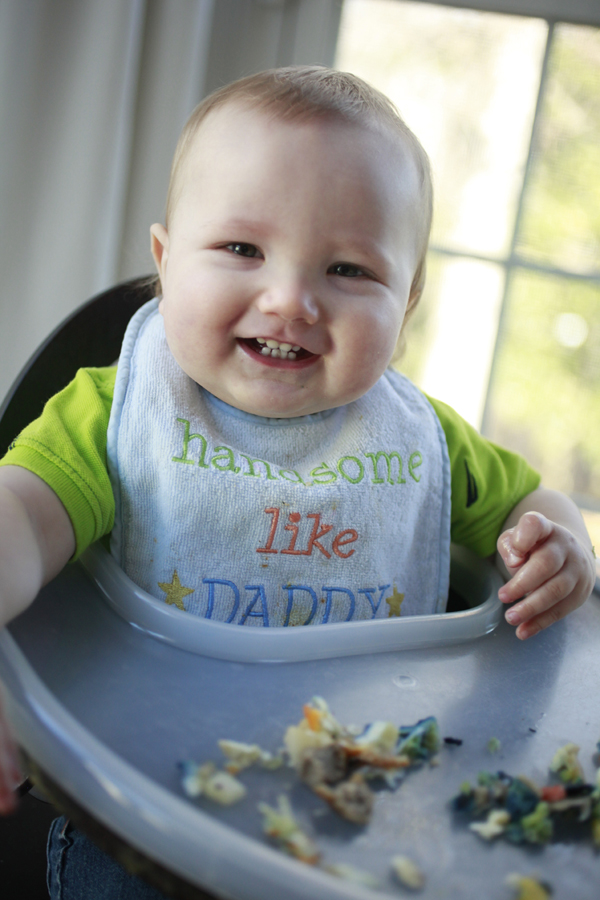Cindy Morrison, M.S., CCC-SLP, CLC
Let’s Talk Teething!
Teething is a natural process for children that begins at about two months of conception. At the time of birth, most beautiful babies already have 20 teeth formed deep within their jaw bones. Teeth typically begin to appear when a child is six months of age although this can vary by child. Baby teeth are important because they hold the place for permanent teeth and they help guide them into the correct position. Baby teeth play an important role in the development of your child’s speech and their ability to chew foods and this is why pediatric speech language pathologists are well-versed on teething!
Did you know there are stages of teething?
It’s so important to recognize, support and give comfort to your child during every stage of teething. Pre-teething, or erupting, occurs when the teeth are slowly rising from the bones of the jaw. The discomfort of this first stage is often over looked. The behavior your baby uses in attempts to communicate with you is often mistaken as your baby being tired or hungry when there is a lack of physical sign (raised bump along the gum line or cutting tooth). Many people naturally feel that their baby is “feeling cranky” or beginning to show signs of being a “picky eater”, however, some children are experiencing pain.
The next stage of teething is the most commonly addressed. This is the stage where the tooth shows a physical sign; a mountain of inflamed, little gum line and begins cutting and rising. It is normal for some children to experience pain and to avoid eating certain foods, textures, flavors and/or temperatures while the torn skin in the oral cavity is healing around the tooth.
When can I expect to see baby teeth and how should I care for them?
Birth to 6 months:
• Your baby’s front teeth are forming below the gums and are almost ready to erupt into their mouth.
• The best oral care and hygiene is to clean you baby’s gums with a damp washcloth each day.
• Remember that your baby may be trying to communicate discomfort with you prior to their body showing you the physical signs of teething (symptoms of teething listed below).
7 to 12 months:
• The front teeth or incisors are usually starting to erupt into the mouth and there permanent teeth are starting to form underneath the gums.
• Continue to practice best oral care and hygiene; wipe the gums off with a washcloth and start introducing a small, soft tooth brush as soon as your baby has teeth. Brushing with water is adequate at this early stage, toothpaste is not necessary.
13-30 months:
• Primary and secondary molars are starting to erupt into the mouth and may cause discomfort.
• Use a small toothbrush with soft bristles.
• The amount of toothpaste should be smaller than the size of a water droplet.
• Brush your child’s teeth at least twice a day.
Do all children have the same teething symptoms?
There is a trend in the type of teething symptoms that children demonstrate, but it can and does vary very much by child. In order for teeth to erupt, they grow incredibly slow pushing and tearing their way through muscle and flesh. Ouch! Naturally, this can cause inflammation and pain. Your child can tell you that they are experiencing discomfort and pain even without words to communicate. Since speech and language is not fully developed during this time, the most common way that children communicate with their parents is to show changes in their behavior.
• Cranky, Irritable
• Drooling
• Difficulty Sleeping
• Running nose
• Diarrhea
• Slight fever
• Chewing whatever comes in hand OR refusing to chew anything at all
• Seeking comfort by wanting to stay close to mommy, daddy or caregiver.
• Poor appetite, food refusals
• Avoiding breastfeeding (sucking can be painful for teething gums)
• Tugging at ears
• Red, swollen cheeks and/or gums
• Biting behavior
I saved the symptom of biting for last. Biting is a completely normal act that happens during this stage. Some children find comfort in the counter pressure they feel when they bite down against the opposing pressure they are experiencing inside their mouth from their rising teeth.
When you notice your child using this behavior, you can help your child find comfort and stay out of trouble by providing your child with a safe option to bite on. Remember, this behavior may be your child’s only way of communicating with you that they are hurting and need your help. It’s important to teach them that it is not appropriate to bite others, but be sure that you are honoring what they are trying to communicate to you and that you are giving them an appropriate alternative.
What foods should I avoid giving to my baby when they are teething?
There are several types of foods that can cause pain and discomfort while your baby is teething and are better off avoided until the skin around the erupted tooth has healed. Remember, this is an open wound and it can burn and stings when certain foods make contact. Keep your child comfortable and prevent refusal behaviors by avoiding the following foods.
• Citrus Foods
• Tomatoes, Tomato Sauce
• Spicy foods
• Salty Foods
• Frozen teethers or frozen foods. Cool temperatures, such as items from the refrigerator are appropriate and provide comfort, but extreme temperature such as frozen items can make nerve endings zing! Ouch! Provide your child with mildly chilled foods or teethers that can help soothe their sore gums without overloading their sensory system.
• Foods that are hard to chew
Teething is the most common time for poor eating behaviors to start, as simple refusals from pain, and to escalate. To avoid mealtime refusals, this is a good time to back off of the chewable foods (for the older babies gaining first and second year molars) and think about offering softer foods, such as, ground meats, rice, over steamed vegetables. If your child is refusing chewable bites that you’ve presented to them, you can puree the rest of what you’ve prepared and offer the meal via spoon. It is important for you to decrease your child’s work load, not their volume, by modifying their foods while they are uncomfortable. Taking this important step meets your child’s needs and sets your child up for a successful, forward progression in eating once the skin around the teeth have healed.
What can I do to provide comfort to my child?
There are many ways to provide comfort for your child during each stage of teething. First and foremost, give them lots of love!
It’s really just a personal preference whether you choose to take a more natural approach to provide comfort by offering amber teething necklaces, homeopathic teething remedies, baby massage, reflexology, cool wash clothes dipped in breast milk/formula, cool puree or fruit, natural teethers, teething jewelry and teething biscuits or whether you feel just as comfortable simply offering an over the counter medication such as acetaminophin or ibuprofen under the direction of your pediatrician.
It’s important to discuss all of these options with your pediatrician to decide which approach is the best and safest approach for your baby. All babies experience teething differently. Some babies have teeth show up without a single complaint, but others struggle. Do yourself and your baby a favor and honor that your baby’s experience is his or her own. Together you’ll find the way!
The American Dental Association (ADA) recommends that kids see a dentist by age 1, when six to eight teeth are in place, to spot any potential problems and advise parents about preventive care.
Happy, Healthy Teething!





It will help them reduce their tooth pain. If you don’t have a teething symptoms ring you can also use a washcloth.
my sons canines are coming in first is that weird?